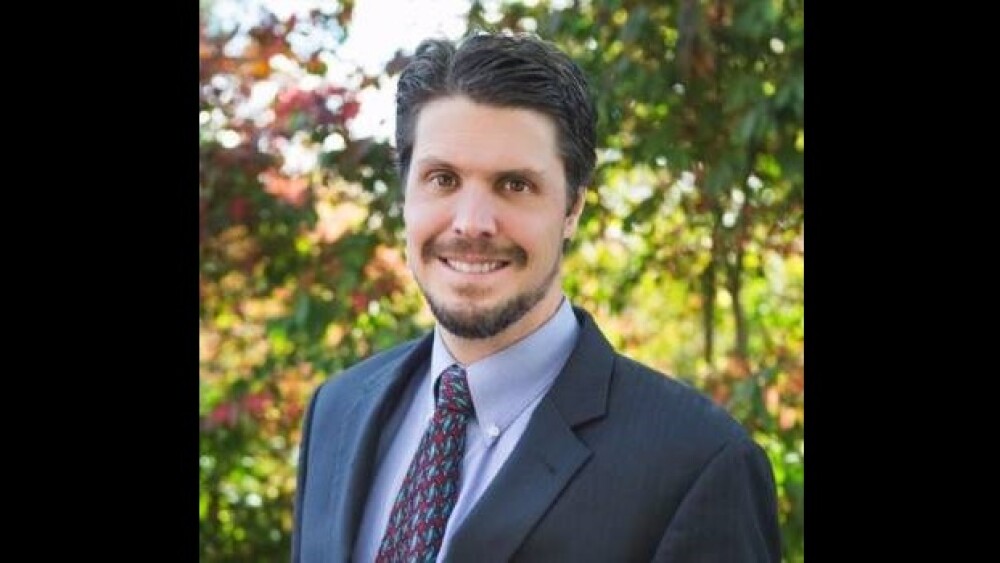The problem Kinaset is trying to solve is that over time, patients receiving asthma therapies – typically inhaled corticosteroids plus bronchodilators – become steroid-refractory.
Kinaset CEO Robert Clarke, Ph.D./Courtesy Kinaset Therapeutics
Kinaset Therapeutics, a small, virtual biotech, is currently dosing asthma patients with a potential best-in-class inhaled pan-JAK inhibitor. The therapeutic is designed for patients with broad, severe asthma.
“We aim to treat all comers with severe asthma,” Robert Clarke, Ph.D., CEO, told BioSpace. “This therapy, KN-002, will be an add-on to the standard of care.” But, without Clarke’s early career shift, it may never have entered clinical trials.
Clarke’s involvement in respiratory therapy development evolved from an early career revelation. “I was a biomedical engineer…focusing on the health hazards of environmental particulates for my Ph.D. thesis (at Johns Hopkins University),” he began. In that world, particulates were bad, something to be avoided. As he talked with biopharma colleagues, however, he realized that particulates could be used to deliver medicines. That understanding caused him to change his area of focus from environmental health to respiratory medicine.
Following his Ph.D., he completed a research fellowship in respiratory biology at Brigham and Women’s Hospitals and Harvard University. Afterward, he joined Alkermes, a Dublin-based biotech focused on neuroscience and oncology, before accepting a series of leadership positions at PULMATRiX, a clinical-stage biotech company developing inhaled therapeutics. During his 15 years at PULMATRiX, he held positions as head of R&D, CSO and, finally, CEO, leading the company through critical stages of early-stage development and through the transition from a private to a public company. He left PULMATRiX in mid-2019 to consider other opportunities.
“Then COVID-19 hit,” Clarke said. “COVID is an airborne disease, so this is a good time to be a respiratory scientist.” The venture capital community agreed, directing funds to companies that were working to squelch this global pandemic and treat respiratory disease. Kinaset, which Clarke founded in 2020, was among them.
As a pulmonary physiologist with deep R&D expertise, he had found an intriguing asset (the novel anti-inflammatory now dubbed KN-002) at Vectura Group, in the UK. “It was a well-integrated, IND-enabled approach, but it wasn’t being developed. With my connections to the venture capital world (developed while fundraising as CSO/CEO at PULMATRiX), I could get traction to financing to bring that asset forward.”
Atlas Ventures and 5AM Ventures in the U.S., and Gimv in Belgium funded the $40 million Series A round – “enough capital to get us through Phase IIa proof-of-concept,” Clarke said – based on the strength of the asset and the track record of the management team and scientific advisors. It was an important serendipity, Clarke said, that, “Two colleagues who knew the asset well came with it to Kinaset.”
The problem Kinaset is trying to solve is that over time, patients receiving asthma therapies – typically inhaled corticosteroids plus bronchodilators – become steroid-refractory, meaning their medications become less effective and asthma attacks before more frequent, he explained. Kinaset recently completed the first part of a 4-part Phase Ib study of its lead candidate, KN-002. Part one assessed the safety of this JAK inhibitor on normal, healthy individuals.
Now in part two, “We’re in the midst of dosing asthma patients,” Clarke said. Topline results from that arm of the study are expected in early 2022. “Then, we will move to treat moderate to severe asthma patients early in 2022.” Part four will assess the effectiveness of this approach to treat patients with chronic obstructive pulmonary disease (COPD) patients.
As the face of Kinaset, Clarke has had the benefit of mentors throughout his career who groomed him to be a CEO. For example, “Robert Connelly (CEO at PULMATRiX prior to Clarke) gave me full exposure to the board, so I knew what we needed in terms of board composition and board interactions.”
Some learning, however, can only occur on the job. When he stepped into his first CEO position, he recalled, “Fundraising became my chief responsibility. I had to develop a thicker skin to hear ‘no’ and continue to move forward if we believed in the science.”
He also knows to leverage his team’s strengths to round out any missing functions. For example, Kinaset doesn’t have a chief scientific officer. Instead, Clarke and Frazer Morgan, co-founder and chief development officer, formerly of Vectura, share that role. In addition, Kinaset co-founder Roger Heerman, former executive vice president at Vectura, serves as chief business/operating officer. Their combined expertise helped bring KN-002 to the clinic within one year. “We also work with experts in the field and have a great consultancy base,” Clarke pointed out. “And, we have a single asset, so it’s easier to focus on it.”
His immediate goal is to shepherd KN-002 through clinical trials. “This could be a next-generation respiratory therapy,” Clarke said. As it advances, Kinaset is beginning to look at other assets that fit the company’s thesis of respiratory, preferably inhaled therapeutics that have novel mechanisms of action.
While Clarke is driven to ensure Kinaset succeeds, his passion is for science itself. To that point, he currently serves as a board member for EnBiotix, Inc. as well as on the environmental engineering advisory board at The Johns Hopkins University.






